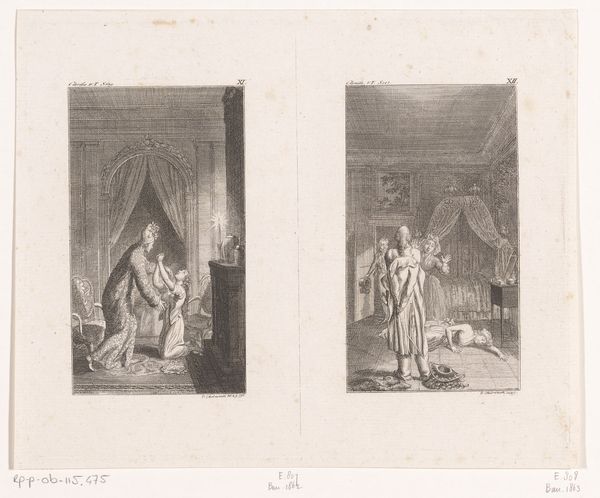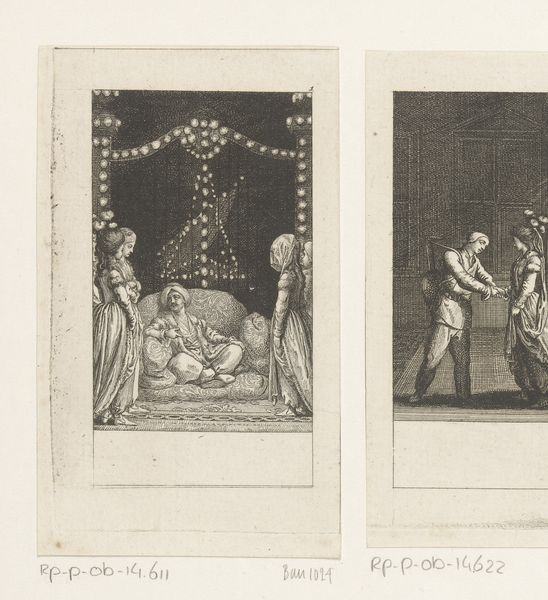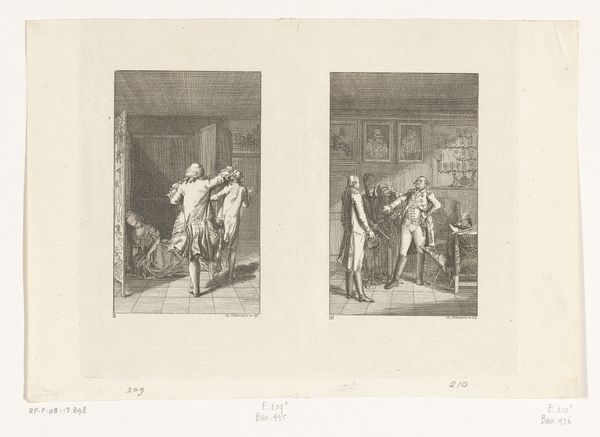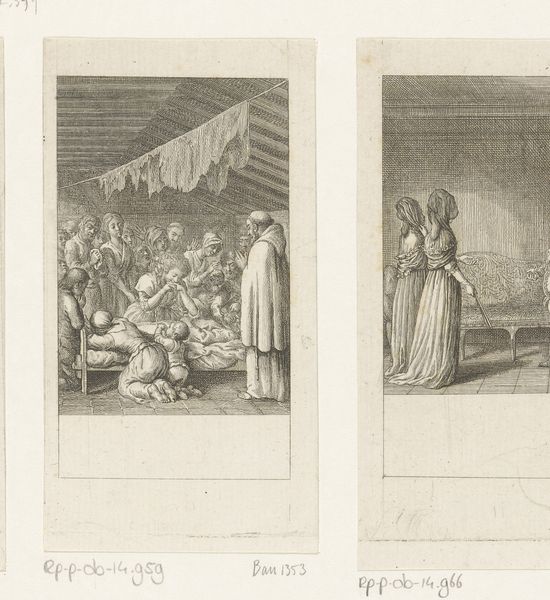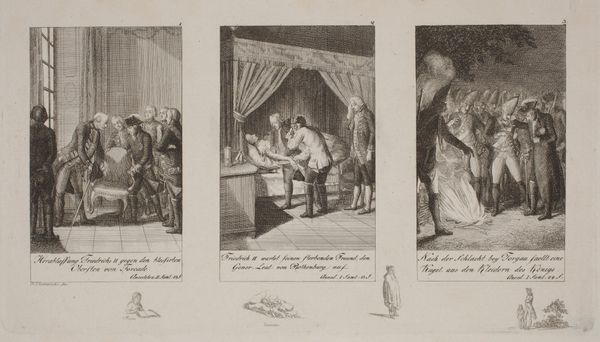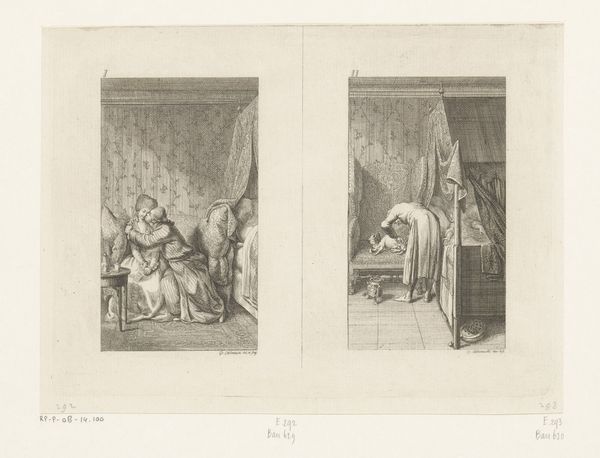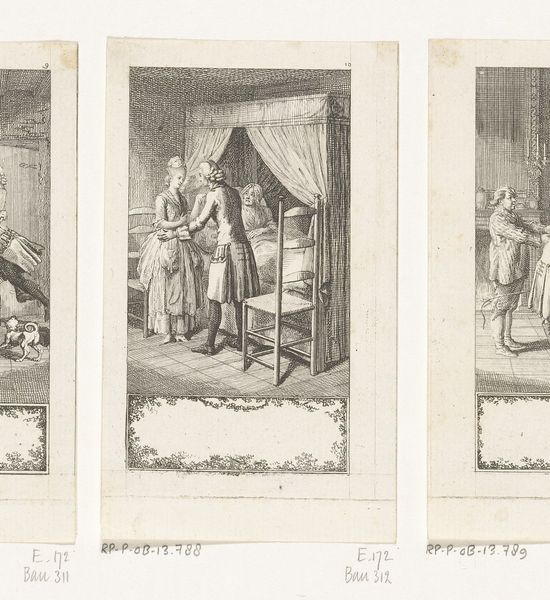
Twee voorstellingen uit Clarissa van Samuel Richardson 1796
0:00
0:00
Dimensions: height 165 mm, width 210 mm
Copyright: Rijks Museum: Open Domain
Daniel Nikolaus Chodowiecki created these two scenes from Samuel Richardson’s novel Clarissa. It offers us a window into 18th-century social and moral concerns. Published in 1748, Clarissa tells the tragic story of a young woman who is manipulated, trapped, and ultimately violated by the antagonist Lovelace. Chodowiecki was known for illustrating literary works, and these images capture the emotional intensity of Richardson's narrative. We see Clarissa on her deathbed. The figures around her, their faces etched with grief and guilt, underscore the novel's themes of morality and the consequences of social pressures. Note that the women attending to Clarissa are central to the composition. Their presence emphasizes the significance of female relationships, yet their inability to protect Clarissa highlights the limited power women had. Clarissa's story, though fictional, reflects the very real vulnerabilities and constraints placed on women in the 18th century, inviting us to reflect on the complex interplay of gender, class, and individual agency.
Comments
No comments
Be the first to comment and join the conversation on the ultimate creative platform.

